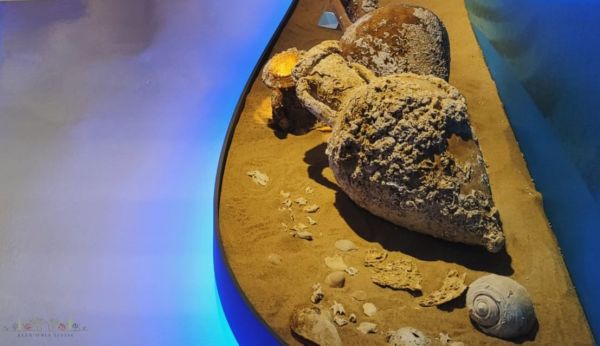While the city of Sami was already inhabited in the Bronze Age and constituted one of the 4 city-states of Kefalonia (who among you has played Assassin's Creed Odyssey and couldn't hold back a smile finding himself in ancient Sami?), the village of Panormos, located where Fiskardo is today, was built in Roman times as an important trading base. Thanks to its sheltered port and its strategic position in the Mediterranean, the old Fiskardo was in fact a lively center of great economic importance. The first room of the museum, dedicated to housing settlements, bears witness to the importance that Sami and Panormos already had in the past and tells of the public and private life of their inhabitants. The second room is instead dedicated to water, an element that contributed to the expansion of Sami as a seaport and which in Roman times was the focus of impressive public works such as thermal baths. Water is not only a source of life, but also an element of spiritual purification and an indispensable support for the transport of goods. The amphorae found at sea underline the importance of the ports of Sami and Panormos for trade throughout the Mediterranean basin. The worship of deities, handicraft activities, sports competitions and war represented the daily life of the inhabitants of Sami and Panormos. The third room displays refined jewels and glass vases that demonstrate the wealth of these cities and the skill of those who lived there. Finally, the fourth room is dedicated to funerary customs: the tombs and furnishings found inside reveal not only the affection of people for their loved ones but also and above all describe the burial practices of the Samiotes and Panormites, opening a window onto the their spirituality.
Don't wait for a cloudy day to visit the museum, it absolutely must be included in your visit to this area of the island!
Sources: Ministry of Culture and Sports, Superintendency of Antiquities of Kefalonia and Ithaca.
Interested in the history of Kefalonia? You may also like these articles:
- THE MYCENEAN TOMBS OF KEFALONIA: https://www.kefalonialiving.com/blog-viaggi-cefalonia/item/88-kefalonia-living-tombe-mycenee
- ROMAN KEFALONIA, THE ARCHAEOLOGICAL SITES OF FISKARDO AND SKALA: https://kefalonialiving.com/blog-viaggi-cefalonia/item/60-kefalonia-living-rovine-romane-fiskardo-skala
- CASTLES OF KEFALONIA: https://kefalonialiving.com/blog-viaggi-cefalonia/item/64-kefalonia-living-castelli-cefalonia
- ACQUI DIVISION, A SHARED MEMORY: https://kefalonialiving.com/blog-viaggi-cefalonia/item/39-kefalonia-living-divisone-acqui

